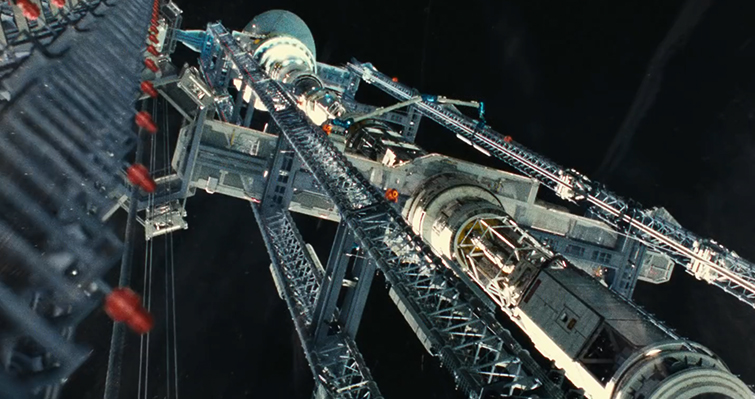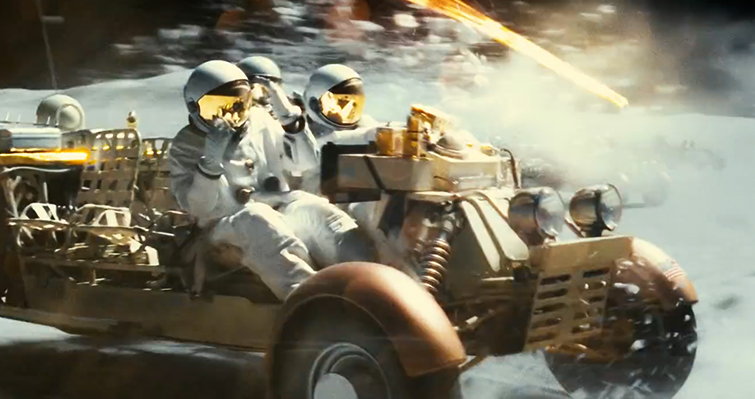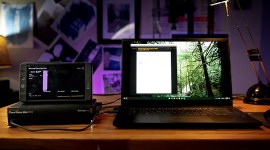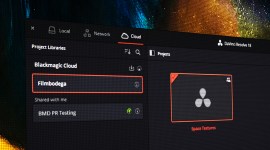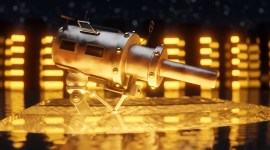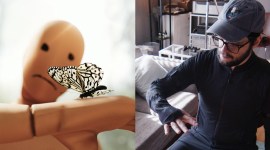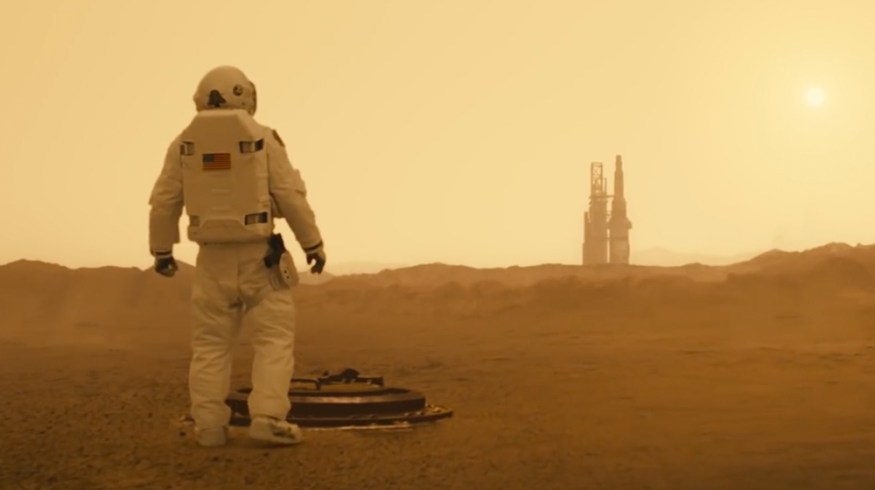
The Ad Astra Editing Team On Creating “Quiet Intensity” in The Edit
The Ad Astra film editing team sat down with PremiumBeat to describe their process and what it’s like working with director James Gray.
The work of director James Gray has always intrigued and impressed me, in that it seems that with each film, he chooses a different genre or environment to host his characters. With entries in romance (Two Lovers), period drama (The Immigrant), crime-thriller (We Own The Night), and even historical adventure/drama (The Lost City of Z), Gray has always surprised me with how he re-invents the stage for the types of human interactions and tone he likes to put on screen.
Having said that, his films always have a similar thread. There is a subtlety to the intensity and the rising tide in each of his films — a sort of understated and quiet approach to creating an utter sense of dread or drama. You could definitely say that this is because of the director’s sensibilities and fantastic skills at building tension, which it definitely is, but you need a competent team of artists behind you helping you deliver that intensity.
If you’ve ever made a film with tension and drama, you know that a majority of those things get built up in the editing room. Much like comedy or horror, the timing and the subtlety in the cut is of upmost importance for creating that lulling discomfort and anticipation of what might happen. This editing style is ever apparent in Gray’s latest film Ad Astra, Which is an extremely well-edited film.
We were lucky enough to speak with the editors of Ad Astra, John Axelrad and Lee Haugen. They were kind enough to share insights about the types of issues they encounter on films like this, and how they work as a team to deliver this “quiet intensity.”
PremiumBeat: To start, can you just give me a quick introduction to yourselves and your background in the industry?
John Axelrad: My name is John Axelrad, I’ve got the little ACE behind my name (laughs). I have been working as a feature film editor for about 20 years. I first started off as an assistant editor on some high-profile films, with editors like Anne V. Coates. I worked with her on Erin Brockovich and Out of Sight. I made my way into editing over the years and have now collaborated with James Gray on five films, Ad Astra being the fifth.
Lee Haugen: I’ve been in editing features for about 10 years now, but I started out as an apprentice working on my first film with director James Gray and John and assistant editor Tom Cross (who has since gone on to edit many films). It was a very fortunate first experience for me to have the opportunity to work as an apprentice with such great filmmakers and collaborators. I worked my way up to editor through working on TV, and also I got a good break with the movie Dope I edited, which won Best Editing at Sundance. Then right after that, I was able to join back up with John and James for The Lost City of Z. Then Papillon, then Ad Astra.

A frame from We Own The Night, James and John’s first collaboration together.
PB: John, I guess you and James have worked on every film together since We Own The Night. How did you guys meet, and how would you describe your collaborative process together?
JA: Well James and I actually met at USC film school. We were both there in the late ’80s early ’90s, and that’s where we met. So he he knew me, and when I came recommended to him to do We Own The Night I was just a natural fit. He had respect for me having seen the work that I did. James is a marvelous filmmaker; he really understands the subtlety and power of editing more than most directors I’ve worked with. He is very neoclassical in his approach. He somehow challenges the viewer, since we’re accustomed to faster cutting and faster pacing. But with James, it’s more of a methodical approach. You know the intensity of the performance, the subtle power of juxtaposing sound and image coupled with performance and cinematography. Having worked with him on five films, I really understand how he thinks. That’s part of the process with any director you work with. You really need to develop that second language and truly understand what he or she wants.
There is a quiet intensity is how I would describe how he likes to edit.

A frame from The Immigrant, another one of James and John’s collaborations.
PB: Wow, yeah that’s definitely how I’ve always perceived it as a viewer. One thing I’ve also always really liked about James’s work is that it just seems like from film to film — he kind of switches up the genre and does something pretty unexpected. He’s kept a common thread of that “quiet intensity,” but It’s always within a different genre. So with each different film, how much does your workflow change as it relates to each different genre?
JA: I like to always challenge myself and choose different types of projects to edit. With James, he’s really trying to expand his his worldview and his vision and his talents as a filmmaker and challenge himself on every film he does. He doesn’t want to be pigeonholed. So, I ultimately think that the process of the the editing is not really different. We work extremely methodically. He likes to work in a very chronological order and really perfect things before we go onto the next scene because he’s very narrative driven. There’s a common thread throughout his films where there’s usually one main character, and the film is that person’s point of view.
But yeah, it’s a whole different genre, and dealing with space travel and just dealing with all the visual effects that are required for science fiction is a totally new frontier for James, and we knew when we all started this was gonna be the most challenging.
PB: So you would say this film in terms of the edit was the most challenging one you’ve worked on together?
JA: Yeah it was. This one was especially challenging just because of the complexity of the story and the nuances coupled with science fiction, because we had to make things plausible. We had to make it realistic and not completely farfetched. He really wants to embrace plausibility and not become something that’s just pure fantasy.
LH: We all had to toe the line of how much we wanted to explain the science of it, to help people understand. Of course, story is number one. But then how much do we sprinkle in of the scientific explanation without losing the driving force of the story.
PB: So it was a process of eliminating certain things that felt like it was like over-explaining, but then putting yourself in as the viewer to make sure that it was understandable enough while not being too “hand-holding?”
LH: Yes, exactly. So it was great to bring people in who didn’t know the film — and get their thoughts on how much we needed to explain or didn’t need to explain.
PB: What was the editing workflow of the film? Were you editing during production, or was it all after? How do you deal with editing pre-viz special effects? Our readership is mostly filmmakers, so feel free to be as technically specific as you want. What is the workflow for a sci-fi epic like this?
LH: We do edit right along as they’re shooting in production. We were given some pre-viz that was done beforehand for certain action scenes that we were able to work with during production. This was great, because as they were shooting these action sequences throughout a couple of days, we were able to replace the pre-viz and be able to track how it was flowing and communicate with set to let them know if we needed more close-ups or needed more wides for action scenes, things like that. Then we did have some post-viz (CG scenes) scenes for when we needed an extra wide shot or two to make it flow better. That’s pretty much that’s how we work. John has an interesting story with that stuff though.
JA: I drew the short straw in Death Valley. During the summer in the desert heat. In the trailer you’ll see there’s kind of a battle between some lunar rovers on the surface of the moon. They did shoot that mostly in Death Valley, and the first six days of it were with stunt doubles doing the actual stunts. Then, the actors performed their roles several weeks later, after I had cut something from the second unit action scenes. So then, I incorporated all the close-ups and actors performances. Then, we were still missing other elements, and that was planned, but we would then bring in the stunt team and they would perform more stunts on the stage that would cut together with the actor’s performances. Then the CG work filled in all the other holes. So it was kind of a slow-motion process of that scene coming together over many months.
PB: How do the two of you work together as a team?
JA: I think it’s a very natural process to have the two of us cutting. Lee was a perfect partner to work with because James knew Lee from before. I find it a very liberating experience to be co-editing with somebody. It allows you to explore the film from many different points of view and to really enhance the creative process of putting it together. When you’re editing with someone, you have someone to bounce ideas off of, and that’s to the benefit of the movie.
LH: Yeah, I totally agree. I absolutely love collaborating and working with John and the rest of our core team. We all kind of work together, and being able to go in a room by yourself, work through a scene, and then go to someone who you have confidence in and watch the scene together and analyze it and point out things that they would do differently just makes the film better. We are all artists in our own right, but we wanna make sure that we create the best possible scene that we can.
PB: The last question I always ask is do you have any advice for people starting out who want to eventually be working on big sci-fi films like this?
LH: I would say get out there and get on any job you can. If you want to go into feature films, do everything you can to be in future films. Make the most contacts you can. Talk to everybody that you know in the industry, or knows somebody that knows somebody. Don’t be afraid to come in and offer your services and try to see and try to offer a way that you can help them out. Just in order to learn the experience of working in a feature film. It’s not something that I could learn at a college — exactly how the process works. It’s kind of an unwritten process of how you become a feature film editor of space movies.
JA: You definitely don’t learn this stuff in film school. But what I tell a lot of people that I think is true that a lot of people would agree with is that opportunity is when preparation meets a little bit of luck. You do need to prepare yourself, and study — know the software. I recommend starting as an assistant editor to really see how the underbelly of the process works in the editing chair. Understanding the politics of the editing room. Understanding when to speak and when not to. Understanding everybody’s roles, what the studios do, what the producers do. Working with directors and actors. But you do need a little bit of luck. How I met James for instance, and how I happened to be available when he was looking for editors for We Own The Night. The preparation is the hard work, and if you stay at it, opportunities will happen.
Looking for more industry interviews? Check these out.
- Editor Tom Jarvis on Carpool Karaoke with Paul McCartney
- Industry Insights: The Man in the High Castle’s Cinematographer Gonzalo Amat
- Interview: Composer Chad Cannon on the Obamas’ Higher Ground
- Industry Insights: “Better Call Saul” Production Designer Judy Rhee
- Industry Interview: “Whiplash” Production Designer Melanie Jones



